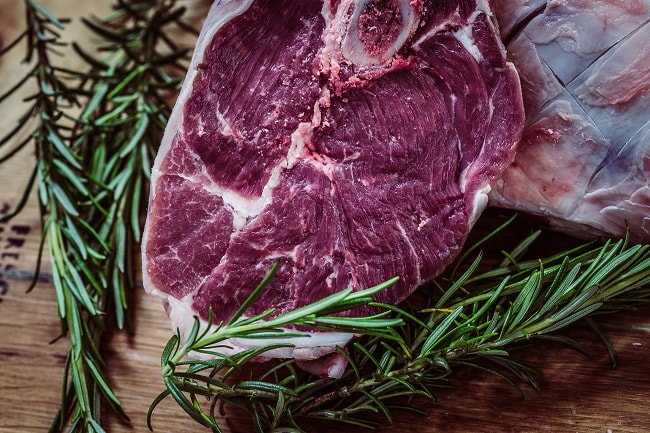1
HOME > Health & Fitness >
AN EXPERTS GUIDE ON MUSCLE BUILDING DIETS
YOU NEED A SOLID EXERCISE REGIME AND A HIGH-QUALITY DIET
Written by Demmy James in Health & Fitness on the 13th August 2018

Stacking on a few extra kilos of lean muscle bulk is one of the best ways to take your look to the next level. Not only does it create a broader figure and help you develop the ‘V-taper’ that many of us so desperately desire – it also ensures you are looking good when your shirt is off. Now, there are two key things we need to focus on when looking to build muscle: a solid exercise regime, and a high-quality muscle building diet. Interestingly, many people don’t realise that the diet is arguably the most important aspect of this equation. In fact, I would argue that without an appropriate diet, all the weight training in the world won’t do a thing. Which is exactly why we have put together this ultimate guide. Seriously, by following the steps in this article, you will have everything you need to stack on slabs of lean muscle.
1. Work out maintenance calories
The first thing you need to do is calculate how many calories you need to consume on a daily basis to simply maintain your current weight. This is ultimately the amount of energy you expend on a day-to-day basis. Your maintenance calories should sit somewhere between 12 and 16 calories per pound of bodyweight. This is dependent on lean tissue – so those who are already super lean will sit at the higher end of this range (as most of their mass is muscle tissue). Alternatively, those with more fat mass will sit on the lower end of this spectrum. So, for example, if you weigh 80kg (80kg x2.2 = 176lb) but carry a little bit of puppy fat, you might set your maintenance calories to 13 calories per pound. 13 x 198 = 2574 calories. And there you have it, a pretty good estimate of your maintenance calories! A bit of a note here – while counting calories can be a bit of a pain, it is a worthwhile pursuit as it gives insight into how much you are eating daily. Free aps like My Fitness Pal are great options that you can use to track your calories every day.

2. Establish your energy surplus
While this may sound a little obvious, to build muscle we need to eat more energy than our maintenance calories – however, we want to do so in a way that minimises fat accumulation. And this is where most people trying to build muscle go wrong – they simply eat as much as humanly possible and get much fatter as well as more muscular. But we can bypass this step entirely and only add lean muscle mass to our frame. This is done by only increasing your energy intake by 10-20% above maintenance on your gym training days, and then eating at maintenance on non-training days. This pretty much ensures that the excess calories you consume will strictly contribute to the development of new muscle, and not fat. Using the above example, if your maintenance calories are 2288 you might add on 20% on lower body training days and 10% on upper body training days – which would look something like this: Monday (Lower Body: 2745 calories), Tuesday (Upper Body: 2516 calories) Wednesday (Rest Day: 2288 calories), Thursday (Lower Body: 3000 calories), Friday (Upper Body: 2745 calories), Saturday (Rest Day: 2516 calories), Sunday (Rest Day: 2288 calories). Now I should also note that it’s unrealistic to expect to hit your set caloric intake perfectly every day – so it just needs to be within the ballpark of your daily goal.

3. Eat adequate protein
Now this one is obvious, but it really can’t be ignored. Protein consist of little compounds known as amino acids. Amino acids are the building block of every single one of our cells. With this in mind, they are what are used to repair and develop new muscle tissue. As such, you need to ensure that you have enough protein available to build muscle after an intense training session. For most, a protein intake of 1.7 – 1.9 grams of protein per kilo of bodyweight is more than enough to maximise recovery and promote the development of muscle tissue. While there is no danger in eating more than this, it is certainly not necessary. The best protein sources are meats, eggs, poultry, fish, and if required, whey protein powders (although these should be consumed secondary to our whole sources).
4. Don’t fear fat
Most people concerned with improving the way they look are stuck in the mindset that fats are bad, and as such should be avoided at all cost – and there is nothing further from the truth. Monounsaturated fats (such as those found in nuts, avocados, and fish) and saturated fats (such as those found in red meat, eggs, and dairy) have both been shown to improve health and provide the body with naturally occurring cholesterol. Which is a good thing, you see, cholesterol is used to produce the hormone Testosterone – which increases muscle growth while also promoting the metabolism of fat, so that it can be used for energy. In short, it helps us build muscle without gaining fat. But if you choose to limit our consumption of these fats, it can seriously reduce your testosterone production. As a result, 20-30 percent of your daily energy intake should come from fats directly. As indicated above, this should come from those saturated and monounsaturated fats that come from natural sources almost entirely.

5. Manage your carbohydrates
And finally, we have carbohydrates. Carbohydrates are used by the body to provide us with the energy to sustain high intensity exercise. In short, they are essential. Unfortunately, eating too many of the wrong types of carbohydrates (and at the wrong times) can actually result in fat gain. With this in mind, we want to only prioritise the consumption of whole carbohydrates (such as those found in vegetables and whole grains) while limiting our intake of refined carbohydrates (such as those that come from junk foods). Moreover, you should try and eat the bulk of your daily carbohydrates spread between the meals directly before and after your training session – this ensures that those carbohydrates are either used for energy during your session, or to help you recover after your session. In terms of how many grams of carbohydrates you should eat daily, this is actually going to depend on your protein and fat intake. With the remainder of your calories coming from carbohydrates after you have worked both of these out. For example: If (again using the above example) your energy intake on lower body days is 2745 calories and your bodyweight is 80kg, then we can work it out like this: Protein intake (1.8 * 80) = 144 grams. As there are 4 calories in a single gram of protein, our caloric intake from protein = 576 calories. Fat intake (30% of 2745) = 823 calories. As there are 9 calories per gram of fat, this would work out to be 91 grams of fat. Carbohydrate intake ([823 + 576] – 2745) = 1348 calories. As there are 4 calories per gram of carbohydrate, this would work out to be 337 grams of carbohydrates. Using this methodology, you can work out your intake requirements for each of your training and non-training days, and then plan accordingly – providing you a surefire way to build a heap of lean muscle in the process!

Building muscle is one of the most effective ways to take your look to the next level – assuming you minimise fat build-up in the process. By following the steps in this guide, you have everything required to provide the body with the essential nutrients it needs to jack up testosterone production, provide energy for your workouts, and build a great physique. Now you just need to implement it!
Trending
2
3
4
5
6
7
8
9
10









